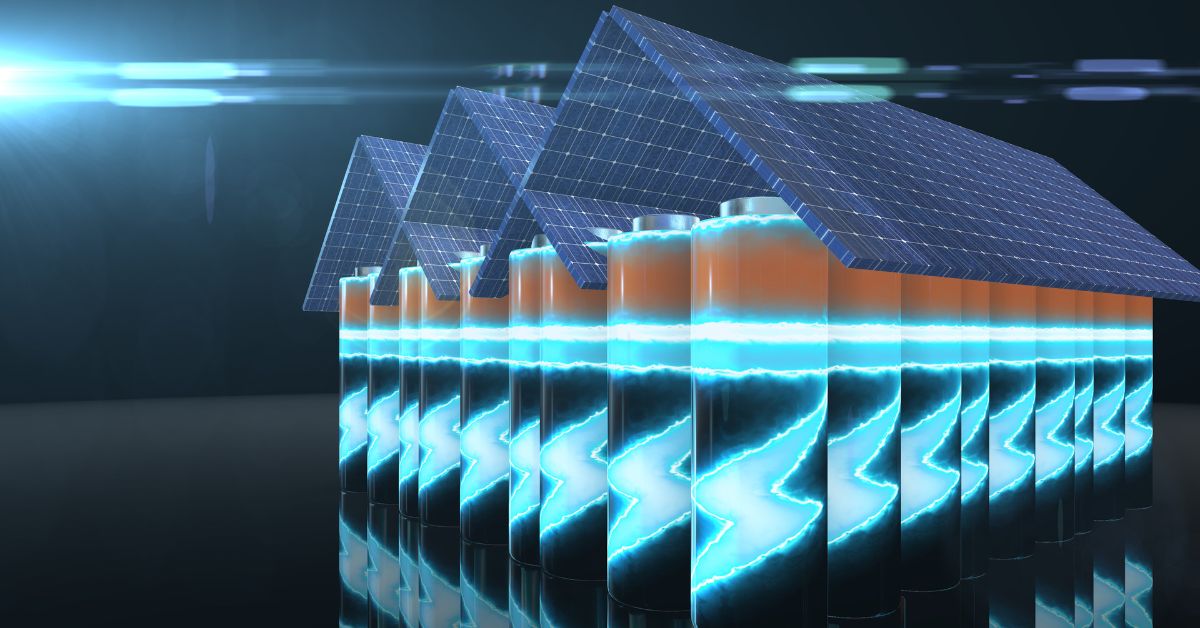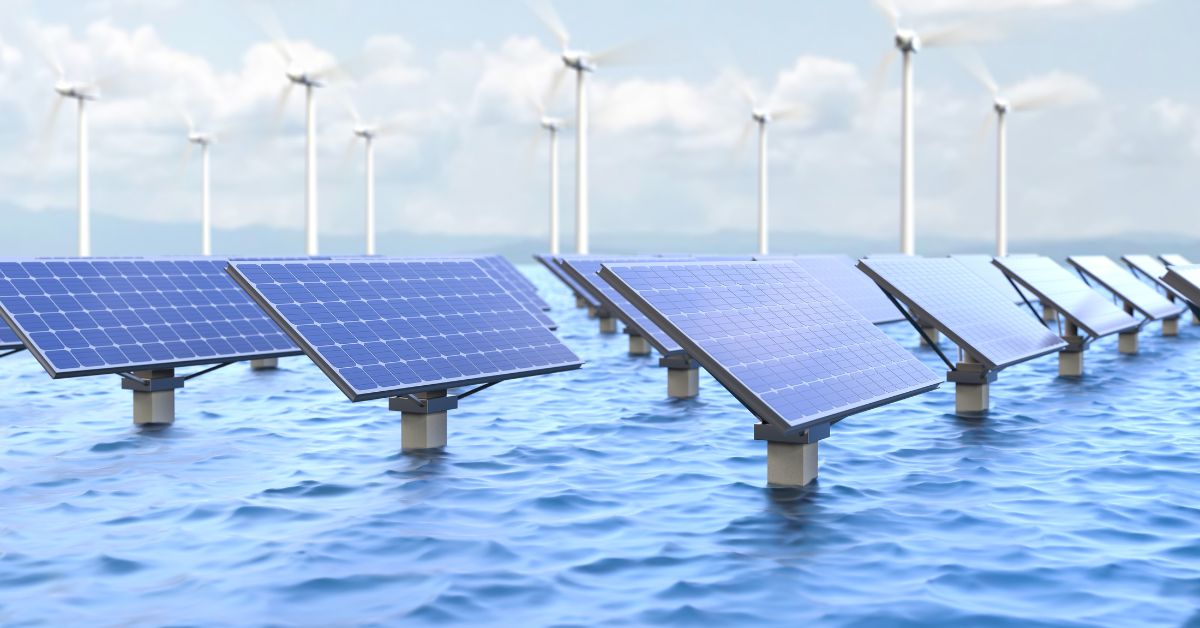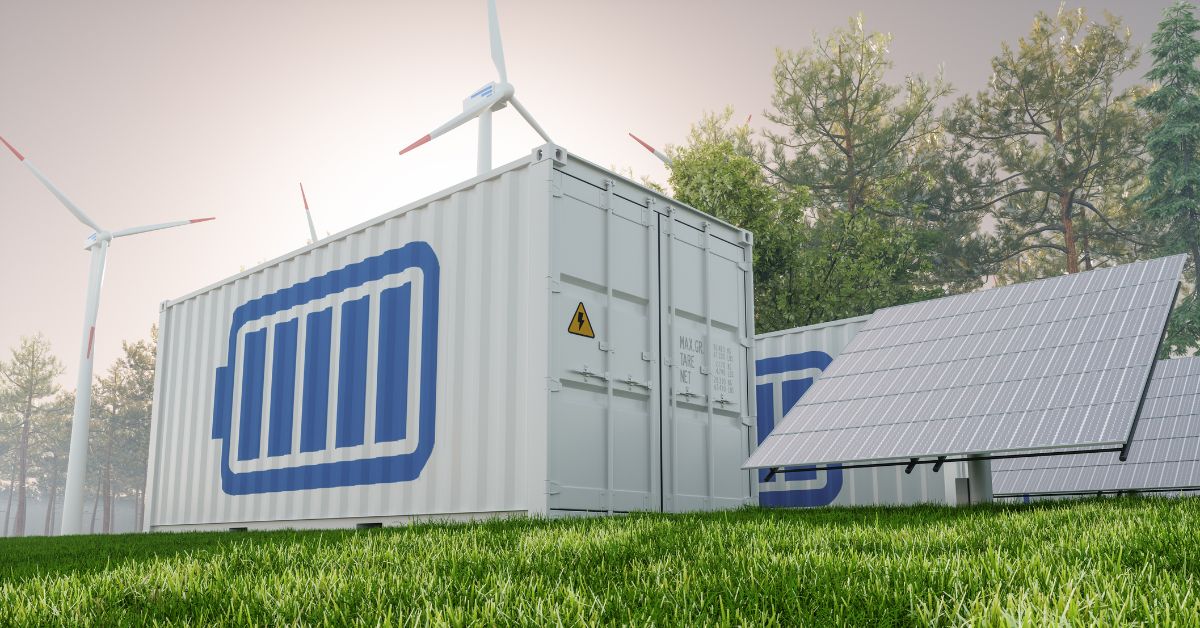Solar Energy Storage
Solar energy storage is the process of capturing and retaining excess solar power for later use, typically through batteries or thermal systems. It ensures continuous energy availability, even when the sun isn’t shining. This technology enhances grid stability, reduces reliance on fossil fuels, and supports sustainable, renewable energy transitions.
Solar Energy Storage: Harnessing the Sun’s Power for a Sustainable Future
Table of Contents
- Introduction
- Overview of Solar Energy Storage
- Importance of Energy Storage in Renewable Systems
- Types of Solar Energy Storage Technologies
- Mechanical Storage Systems
- Pumped Hydroelectric Storage
- Flywheel Storage
- Thermal Energy Storage
- Molten Salt Systems
- Phase Change Materials (PCMs)
- Electrochemical Storage
- Lithium-ion Batteries
- Flow Batteries
- Solid-State Batteries
- Chemical Energy Storage
- Hydrogen Fuel Cells
- Synthetic Fuels
- Mechanical Storage Systems
- The Role of Batteries in Solar Energy Storage
- How Batteries Work in Solar Storage
- Battery Capacity and Efficiency
- Innovations in Battery Technology
- Grid-Scale vs. Off-Grid Solar Storage
- Utility-Scale Solar Energy Storage
- Residential Solar Storage Solutions
- Hybrid Systems and Their Benefits
- Challenges and Limitations in Solar Energy Storage
- Cost Considerations
- Energy Loss and Efficiency Issues
- Environmental Concerns and Sustainability
- The Role of Recycling and Disposal
- Recent Advancements in Solar Energy Storage
- Innovations in Battery Technology
- Smart Grids and Energy Management Systems
- AI and Machine Learning in Solar Storage Optimization
- The Future of Solar Energy Storage
- Emerging Trends and Predictions
- Policy and Government Incentives
- Potential Game-Changing Technologies
- 5 FAQs About Solar Energy Storage:
- Conclusion
- The Road Ahead for Solar Energy Storage
- Embracing a Renewable Future
Solar Energy Storage
Introduction
Overview of Solar Energy Storage
Solar energy is an inexhaustible resource, with the sun providing an immense amount of energy daily. However, the challenge lies in efficiently harnessing and storing this energy to ensure continuous power supply, even when the sun isn’t shining. Solar energy storage technologies allow us to capture excess energy generated during peak sunlight hours and store it for use during cloudy days, nighttime, or periods of high demand. These systems are crucial for reducing dependency on fossil fuels and transitioning to a more sustainable energy future.
Importance of Energy Storage in Renewable Systems
Renewable energy systems, especially solar, are inherently intermittent—meaning they do not provide a constant supply of energy due to fluctuations in solar intensity. Without efficient storage solutions, the surplus energy produced during the day would go to waste, and the grid would still rely on non-renewable energy sources during times of low solar production. Energy storage is the key enabler in overcoming these challenges by balancing supply and demand, ensuring reliability, and maximizing the utilization of solar energy.
Types of Solar Energy Storage Technologies
Solar energy can be stored using various technologies, each with its advantages and specific use cases. These technologies fall into four broad categories: mechanical, thermal, electrochemical, and chemical energy storage.

Mechanical Storage Systems
Pumped Hydroelectric Storage
Pumped hydroelectric storage (PHS) is the most widely used form of large-scale energy storage. In a PHS system, excess electricity generated from solar energy is used to pump water from a lower reservoir to a higher elevation. During periods of low electricity generation, the water is released back down, turning turbines to generate electricity. This method has high efficiency and can store large amounts of energy, though it requires specific geographic conditions.
Flywheel Storage
Flywheel energy storage systems store energy in the form of rotational kinetic energy. When there is surplus solar energy, the flywheel is spun at high speeds, and when energy is needed, the flywheel slows down, converting kinetic energy back into electricity. Flywheel systems are highly efficient, have a long lifespan, and can provide rapid energy discharge. However, they are typically used for short-duration storage rather than long-term energy storage.
Thermal Energy Storage
Molten Salt Systems
Thermal energy storage is another promising way to store solar energy. In a molten salt system, solar heat is concentrated using mirrors and stored in molten salts, which can retain heat for long periods. This stored thermal energy can later be used to produce steam and generate electricity, even after the sun has set. Molten salt storage is widely used in concentrated solar power (CSP) plants and has a relatively low cost compared to other storage methods.
Phase Change Materials (PCMs)
The Phase Change Materials (PCMs) are substances that absorb and release thermal energy during the process of melting and freezing. PCMs can store and release large amounts of energy during the phase transition between solid and liquid states. These materials are being researched for use in solar thermal energy storage systems and can be particularly useful in residential and commercial heating applications.
Electrochemical Storage
Lithium-ion Batteries
Lithium-ion batteries are the most commonly used storage technology in solar energy systems due to their high energy density, efficiency, and decreasing costs. These batteries store electricity generated from solar panels during the day and release it when needed, making them ideal for both grid-scale and residential storage solutions. Despite their popularity, lithium-ion batteries face challenges such as limited lifespan, potential safety risks, and reliance on finite resources like lithium and cobalt.
Flow Batteries
Flow batteries are an emerging electrochemical storage technology that offers a longer lifespan and scalability compared to lithium-ion batteries. In a flow battery, energy is stored in liquid electrolyte solutions that flow through a membrane. These systems are particularly suitable for large-scale, long-duration energy storage because they can be easily scaled by increasing the size of the storage tanks.
Solid-State Batteries
Solid-state batteries, a next-generation battery technology, replace the liquid electrolyte found in traditional batteries with a solid electrolyte. This makes them safer, as they eliminate the risk of leakage and fire, and they can potentially offer higher energy density and faster charging times. However, they are still in the early stages of commercialization and face challenges in terms of cost and large-scale production.
Chemical Energy Storage
Hydrogen Fuel Cells
Hydrogen energy storage involves using solar electricity to split water molecules into hydrogen and oxygen through a process called electrolysis. Hydrogen can then be stored and used in fuel cells to generate the electricity when needed. Hydrogen has the potential to store large amounts of energy and can be used in both stationary applications and transportation. However, the efficiency of hydrogen storage systems is relatively low, and the production, storage, and transport of hydrogen remain expensive and technically challenging.
Synthetic Fuels
Synthetic fuels, also known as electrofuels, are another form of chemical energy storage where solar electricity is used to produce carbon-neutral fuels like synthetic methane or synthetic diesel. These fuels can be stored and used in conventional engines or fuel cells to generate electricity. While promising, synthetic fuels are still in the developmental stage, and their widespread adoption requires further advances in technology and cost reduction.
The Role of Batteries in Solar Energy Storage
How Batteries Work in Solar Storage
Batteries are essential for storing excess solar energy. In a typical solar energy system, solar panels generate direct current (DC) electricity, which is either used immediately or converted into alternating current (AC) for use in the grid or household appliances. When there is a surplus of solar energy, it is stored in batteries for later use. During periods when solar energy production is low or non-existent, the stored energy in the batteries is discharged to supply electricity.
Battery Capacity and Efficiency
Battery capacity refers to the amount of energy a battery can store, typically measured in kilowatt-hours (kWh). Efficiency is another key factor, as it determines how much energy is lost during the charge and discharge cycles. The efficiency of most lithium-ion batteries is around 85-90%, meaning that 10-15% of the stored energy is lost during these cycles.
Innovations in Battery Technology
Battery technology is rapidly evolving to address current limitations, such as cost, capacity, and lifespan. Advancements in solid-state batteries, lithium-sulfur batteries, and metal-air batteries hold the promise of significantly increasing energy density, reducing costs, and improving safety. Additionally, breakthroughs in battery recycling processes are helping to address environmental concerns related to battery production and disposal.
Grid-Scale vs. Off-Grid Solar Storage
Utility-Scale Solar Energy Storage
Utility-scale solar energy storage systems are designed to store large amounts of energy to be used by the power grid during periods of peak demand. These systems often rely on large lithium-ion battery arrays, pumped hydroelectric storage, or other large-scale technologies like flow batteries. Utility-scale storage is critical for maintaining grid stability and reducing reliance on fossil fuel power plants.
Residential Solar Storage Solutions
For homeowners with solar panels, energy storage systems can help reduce electricity bills by storing excess solar energy for use during peak pricing hours or when the sun isn’t shining. Lithium-ion batteries are the most common storage option for residential solar systems, offering a practical way to achieve energy independence. These systems are typically paired with energy management tools to optimize energy usage and maximize savings.
Hybrid Systems and Their Benefits
Hybrid solar energy systems combine solar panels with energy storage and other renewable energy sources, like wind or backup generators. These systems can operate in grid-tied or off-grid modes, providing flexibility and resilience. Hybrid systems are particularly valuable in remote areas or regions prone to power outages, where energy storage can ensure a continuous supply of electricity.
Challenges and Limitations in Solar Energy Storage

Cost Considerations
While the cost of solar energy and storage technologies has decreased significantly over the past decade, upfront installation costs remain a barrier for many consumers and businesses. The capital cost of batteries, in particular, can be high, and long-term cost-effectiveness depends on factors such as battery lifespan, maintenance requirements, and energy savings.
Energy Loss and Efficiency Issues
No energy storage system is 100% efficient. Some energy is always lost during the charging and discharging processes, which can affect the overall performance of a solar energy system. While lithium-ion batteries boast high efficiencies, other storage technologies, such as hydrogen, still struggle with energy loss.
Environmental Concerns and Sustainability
The production and disposal of batteries, especially lithium-ion, raise environmental concerns. Mining for lithium, cobalt, and other metals used in batteries can result in habitat destruction, pollution, and resource depletion. Furthermore, battery disposal presents challenges in terms of hazardous waste management. Advances in recycling technologies and the development of more sustainable battery materials are helping mitigate these issues.
The Role of Recycling and Disposal
As solar energy storage becomes more widespread, the need for effective battery recycling solutions becomes critical. Recycling can recover valuable materials from used batteries, reducing the need for raw material extraction and minimizing environmental impact. Developing circular economy strategies for battery production, usage, and disposal will be essential for a sustainable solar energy future.
Recent Advancements in Solar Energy Storage
Innovations in Battery Technology
In recent years, significant advancements have been made in battery technology to improve the performance, efficiency, and sustainability of energy storage systems. Solid-state batteries, which offer higher energy density and improved safety, are a key area of research. In addition, new chemistries, such as sodium-ion and zinc-air batteries, are being explored as alternatives to traditional lithium-ion batteries.
Smart Grids and Energy Management Systems
Smart grids and advanced energy management systems play a crucial role in optimizing solar energy storage. These systems use real-time data and artificial intelligence to monitor energy usage, predict demand, and control the flow of electricity between solar panels, storage systems, and the grid. This helps maximize efficiency, reduce costs, and improve the integration of renewable energy into the grid.
AI and Machine Learning in Solar Storage Optimization
Artificial intelligence (AI) and machine learning algorithms are being increasingly applied to optimize the performance of solar energy storage systems. These technologies can analyze historical and real-time data to predict energy demand, optimize charging and discharging cycles, and improve grid stability. AI-driven solutions are particularly valuable for large-scale solar projects and microgrids, where managing energy flows efficiently is critical.
The Future of Solar Energy Storage

Emerging Trends and Predictions
The future of solar energy storage is promising, with new technologies and innovations constantly emerging. Trends such as the development of ultra-fast charging batteries, improved recycling techniques, and the integration of solar storage with electric vehicles are set to shape the future of the industry. Furthermore, the growing demand for energy storage in developing countries presents a significant opportunity for expanding solar energy access globally.
Policy and Government Incentives
Government policies and incentives will play a vital role in accelerating the adoption of solar energy storage technologies. Many countries are already offering tax credits, rebates, and grants to encourage the installation of solar energy systems with storage capabilities. As the world shifts towards renewable energy, supportive policies will be essential for driving investment in research, development, and deployment of energy storage solutions.
Potential Game-Changing Technologies
Several game-changing technologies have the potential to revolutionize solar energy storage. For example, breakthroughs in hydrogen storage and fuel cell technology could enable large-scale, long-duration energy storage solutions. Additionally, advances in quantum batteries and superconducting materials could dramatically increase the efficiency and capacity of future energy storage systems.
5 FAQs About Solar Energy Storage:
- What is solar energy storage? Solar energy storage allows excess energy from solar panels to be stored in batteries for later use, especially at night or during cloudy days.
- How long do solar batteries last? Solar batteries typically last between 10-15 years, depending on the type, usage, and maintenance.
- Can solar energy storage work during a power outage? Yes, if you have a battery storage system, it can provide backup power during an outage, but not all systems are designed for this function.
- Is solar energy storage expensive? Costs vary, but solar batteries can range from $5,000 to $15,000, including installation. Incentives and rebates may lower costs.
- How much solar energy can be stored? The storage capacity depends on the battery size. Common systems store 5-15 kWh, enough to power essential home devices for several hours.
Conclusion
Solar energy storage is a critical component of the transition to a clean and sustainable energy future. While challenges such as cost, efficiency, and environmental impact remain, ongoing advancements in technology are paving the way for more efficient, affordable, and scalable storage solutions. By embracing these innovations and supporting the development of new technologies, we can harness the full potential of solar energy and move towards a more sustainable and resilient energy system for future generations.
Click Here to Learn More About Solar Energy Storage
Click Here to Learn More About Solar Panel Recycling and Disposal

